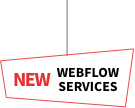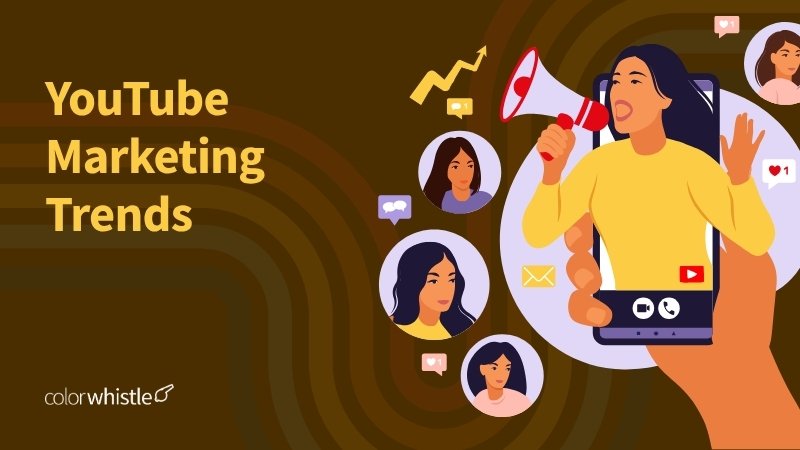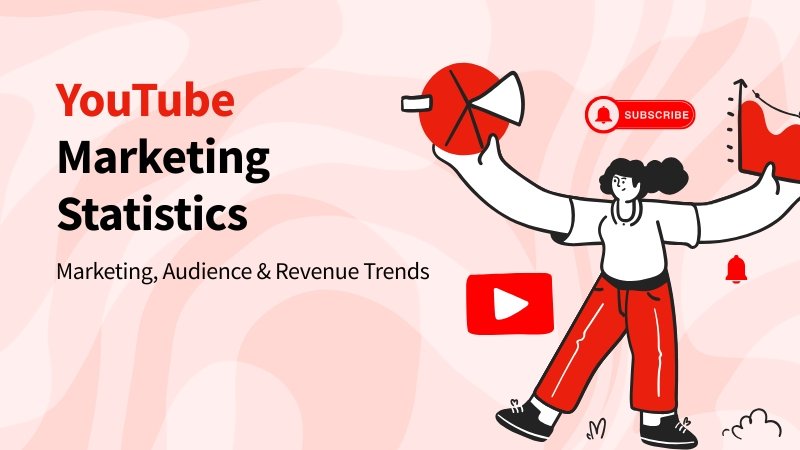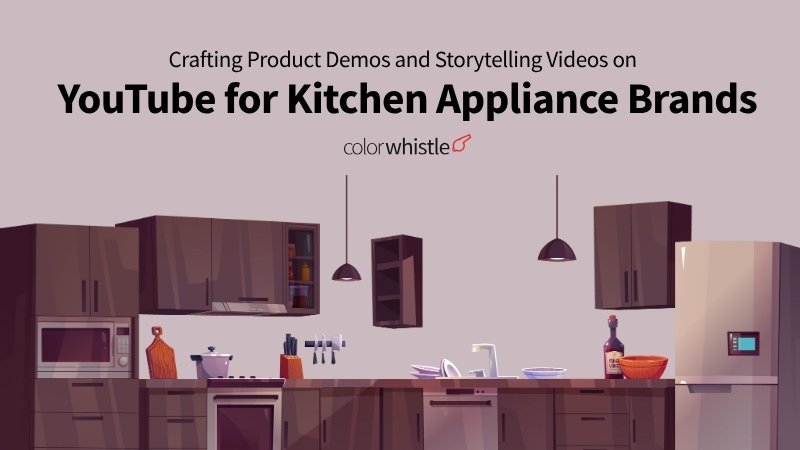If YouTube isn’t at the heart of your 2025 marketing strategy, you might already be falling behind. Over 90% of video marketers have made it their top platform backed by 2.5 billion monthly users and Shorts hitting 70 billion daily views.
But this year, it’s not just about reach. From AI-powered recommendations to the rise of TV-based viewing, YouTube is evolving fast.
This blog breaks down the key trends shaping YouTube marketing in 2025, so you can stay relevant, visible, and ahead of the curve.
TL;DR
Want to win on YouTube in 2025? This blog is your playbook for the latest marketing trends that actually move the needle.
Who’s this for?
Perfect for marketers, content strategists, creators, and brands looking to boost reach, relevance, and ROI on YouTube.
What’s inside:
- Digital Franchises & Fandoms – Build loyalty through serialized content and fan-driven engagement.
- Generative AI & Personalization – Create dynamic content tailored to each viewer, powered by AI.
- Next-Gen Video Formats – Shorts, lo-fi videos, and accessibility features dominate the feeds.
- Winning Content Styles – From reactions to video essays, discover what viewers love right now.
- AI & Virtual Influencers – Digital personalities are creating new ways to connect with audiences.
- Privacy-First Personalization – Deliver relevance without crossing the line on data privacy.
- Franchise & Community Building – Turn viewers into communities through consistent, story-driven content.
- Keyword & Data-Driven Strategy – SEO and insights still rule just with smarter tools.
- High-Impact Editing & Production – AI tools are raising the bar for quality without raising budgets.
- Live Shopping & Shoppable Videos – Blend content and commerce with interactive shopping experiences.
- Regional & Multilingual Content – Go global by going local, with native-language and culture-rich content.
YouTube Marketing Trends for 2025
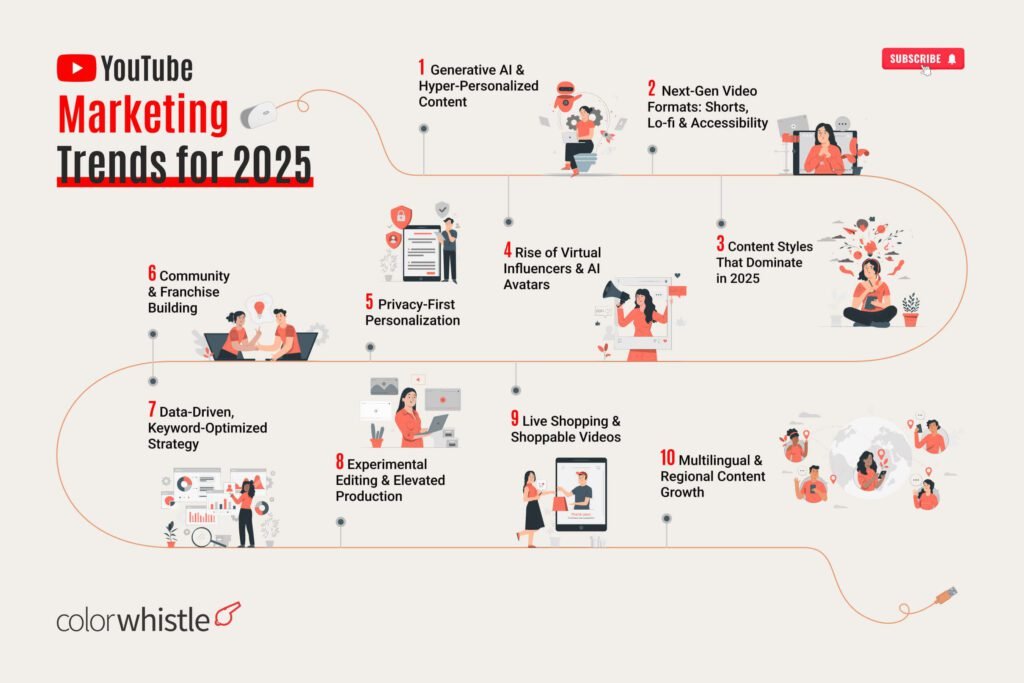
Generative AI & Hyper-Personalized Content
AI is transforming not just the recommendations but the content itself. Generative AI tools are empowering creators to personalize intros, visuals, and even scripts based on user behavior, location, or past interactions. This means personalization at a scale without the hassle of editing 50 different versions. Moreover, predictive planning tools are assisting marketers in testing campaigns virtually before they spend any money.
lExample
Nike has experimented with AI-generated ad variations to test regional resonance across sports communities.
Next-Gen Video Formats: Shorts, Lo-fi & Accessibility
Shorts are still on the rise, especially in music, memes, and moments. They’re enhancing discovery quicker than ever, with artists going viral before they even get on Spotify. But viewers are also after authenticity raw, unfiltered videos shot on phones feel more real and trustworthy. Accessibility is vital too: captions, on-screen text, and sound-friendly design are essential features.
Example
YouTube’s own push for Shorts has boosted creators like MrBeast and Zach King into billions of views, often with low-friction, high-engagement clips.
Content Styles That Dominate in 2025
Different vibes, same platform. Reaction videos are still in the lead due to their emotional connection. Long-form content like commentary and essay videos does well with viewers who want more profound insights, especially in education, tech, and culture. Meanwhile, interactive formats are becoming more popular: think polls, Q&A, or community-chosen outcomes. Creative styles such as voiceover Shorts, animated lyrics, or motion graphics are also gaining traction for being eye-catching.
Example
Marques Brownlee (MKBHD) uses long-form storytelling, while creators like Joma Tech blend commentary with humor and animations.
Also Read
Rise of Virtual Influencers & AI Avatars
AI influencers are not merely avatars they function as marketing machines. These digital figures can livestream, share daily content, and engage with fans 24/7 free from scandals or scheduling problems. Some are fictional, while others resemble actual people. They give brands new opportunities to connect without the unpredictability that comes with human interaction.
Example
Lil Miquela, a virtual influencer with brand deals from Prada to Samsung, has paved the way for digital-first brand collabs.
Privacy-First Personalization
Audiences are looking for content that matters to them, without the feeling of being monitored. Marketers are focusing more on contextual targeting, in-app signals, and user preferences rather than intrusive tracking. For example, it’s about saying, “show me more cooking Shorts” instead of following cookies all over the internet. Honoring privacy today fosters lasting trust and keeps people coming back.
Example
Google’s Privacy Sandbox rollout pushes brands to find smarter ways to personalize within platforms like YouTube, without 3rd-party data dependence.
Community & Franchise Building
Creators are not just putting up content they’re constructing immersive worlds. Serialized storytelling, character arcs tied to brands, and shared universes are winning over loyal fans. These digital franchises make sure audiences return, binge-watch, and engage in discussions about every new release in the comments.
Example
The Amazing Digital Circus grew into a fandom phenomenon, proving you don’t need Netflix to build a universe just YouTube and a strong fan connection.
Data-Driven, Keyword-Optimized Strategy
In a world where AI provides answers rather than links, creators need to enhance their visibility and value. This involves using strategic keywords, crafting SEO-friendly descriptions, and producing content that matches what users are genuinely looking for. Platforms like YouTube Studio, Social Blade, and Metricool give valuable insights into what is effective and the reasons behind it.
Example
Educational creators like Ali Abdaal use search-driven content strategies, optimizing video titles and chapters for discoverability and user intent.
Also Read
Experimental Editing & Elevated Production
Lo-fi is great but so is improving your skills. AI editing tools enable creators to achieve seamless transitions, motion graphics, color grading, and VFX in a fraction of the time and cost. Viewers are expecting visuals that stand out and stories that resonate. Even solo creators can now rival the high-quality finish of agencies.
Example
Creators like Yes Theory and Nas Daily use cinematic editing styles while still retaining authenticity bridging raw storytelling and high production value.
Live Shopping & Shoppable Videos
YouTube is making videos into virtual storefronts. With features like live shopping and shoppable videos, creators and brands can show off products and make sales without viewers having to leave the app. This mix of entertainment and instant purchase options is a big deal for influencers and ecommerce brands. Limited releases, exclusive merch, and live demos create a buzz and urgency that regular ads can’t match.
Example
Brands like Samsung and MAC Cosmetics have successfully used YouTube for live shopping events to boost product launches and drive immediate sales.
Multilingual & Regional Content Growth
YouTube is reaching people all over the world and it’s expanding quickest in local languages and specific regional interests. Marketers who produce or back content in their own languages connect with enthusiastic, overlooked audiences eager for relatable stories. From Hindi tech tutorials to Spanish cooking shows and Korean beauty advice, local content enhances authenticity and engagement.
Example
Channels like Technical Guruji (Hindi tech) and Yuya (Spanish beauty) have millions of loyal subscribers and highlight the power of regional content.
Wrapping Up
YouTube marketing in 2025 is evolving fast becoming smarter, more personal, and highly interactive. With AI-driven content, shoppable videos, and community-led franchises, the platform is full of opportunities for brands ready to lead. But it’s not just about chasing trends it’s about building strategies that truly connect and grow your audience authentically.
If you’re ready to make the most of these shifts, expert-led YouTube Marketing Services can help you create impactful campaigns across every screen and language.
FAQs
1. What is the biggest YouTube marketing trend in 2025?
AI-driven personalization is leading the way. From tailored video content to predictive campaign planning, brands are using AI to create smarter, more relevant viewer experiences.
2. How can brands use YouTube Shorts effectively?
Brands can tap into YouTube Shorts by sharing lo-fi, authentic content that aligns with trending topics, music, or formats. It’s a fast track to visibility, especially for product discovery and brand storytelling.
3. Are virtual influencers actually effective for marketing?
Yes! AI-generated influencers like Lil Miquela are gaining traction because they offer full creative control and 24/7 engagement. They’re especially effective for campaigns targeting digital-native audiences.
4. Why is regional or multilingual content important in 2025?
YouTube’s global growth is fueled by local language content. Creating or supporting videos in regional languages helps brands reach new markets and build trust with culturally aligned messaging.
What’s Next?
Now that you’ve had the chance to explore our blog, it’s time to take the next step and see what opportunities await!
